Last Updated: 4 months ago
Training your cat can be frustrating. Cats may be intelligent, but they are also stubborn.
Unlike dogs, they really don’t care if they please you or not. It’s not a slam; it’s just the way most cats are.
They are highly independent, and even the friendliest cat is a force unto herself. So it’s much more time-intensive and frustrating unless you have years of experience.
Let’s look at simple and effective methods for how to train a cat. They will turn her into a perfectly mannered companion.
Cat Training Tips: How to Train a Cat?
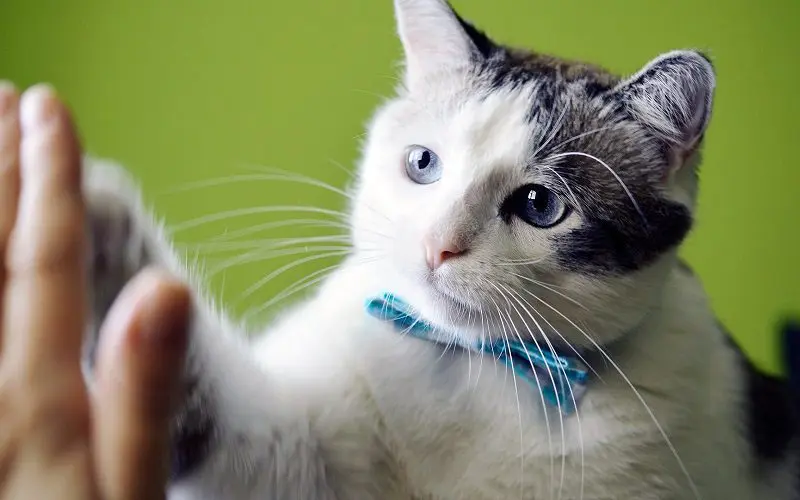
Have you ever had a playful wrestling match with your feline friend? Or have you ever wished he would stop sharpening his claws on the furniture?
Training a cat is not just about teaching it to obey commands. It’s about building a stronger bond and creating a harmonious home environment.
These simple and effective training tips can help you create a harmonious relationship.
Get ready to discover the keys to understanding and positively shaping your cat’s behavior.
1. Positive Reinforcement Mastery
In the cat world, positive reinforcement reigns supreme.
One option for how to train a cat is to reward desired behavior with treats. Cats respond well to positive feedback, associating it with behaviors you value.
Reinforce good behavior consistently, from using the toilet to scratching designated areas.
2. Litter Box Triumphs
Successful toilet use is the most critical task. Start training your cat while they are still kittens, and they will have no problem adjusting to littering.
Choose a quiet and accessible place for the toilet, and keep it thoroughly clean.
If accidents happen, guide the cat to the toilet without scolding. The effects of cat potty training will not last long.
3. Scratching Solutions
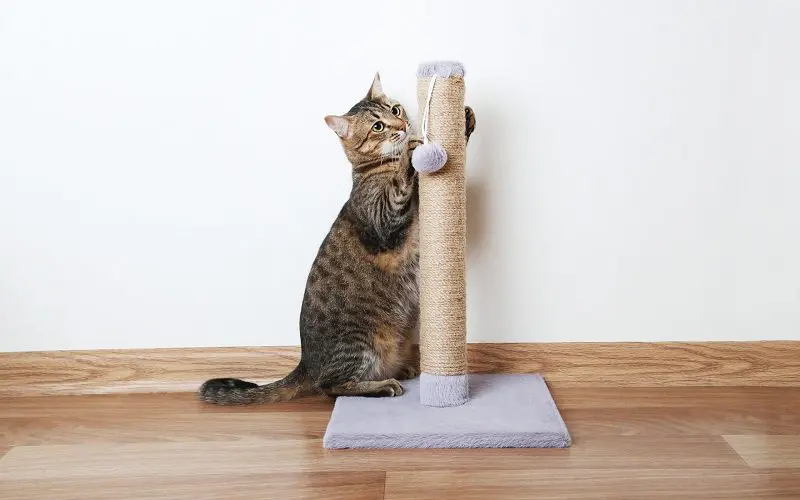
Cats love to scratch, but redirecting this behavior is possible.
Offer enticing scratching posts or pads placed strategically where your cat enjoys scratching. Whenever they use the designated spot, shower them with praise and treats.
Consistency in positive reinforcement will gradually shift their scratching focus to approved areas.
4. Pawsitively Nailing Nail Trims
Claw trimming doesn’t have to be a battle. Start by teaching your cat that it’s okay to touch his paws.
Gradually introduce nail clippers, encouraging calm behavior. If you are unsure, seek advice from your veterinarian.
The benefit of training is that you will no longer scratch furniture or your hands.
5. Feeding Time Etiquette
Establish a feeding routine. Not only will this help control portions, but it will also create predictability in your cat’s routine.
Use this time to reinforce patience and good behavior. Does your cat tend to eat too quickly?
Consider puzzle feeders or interactive toys. These will slow things down and provide mental stimulation.
6. Harnessing the Power of Clicker Training
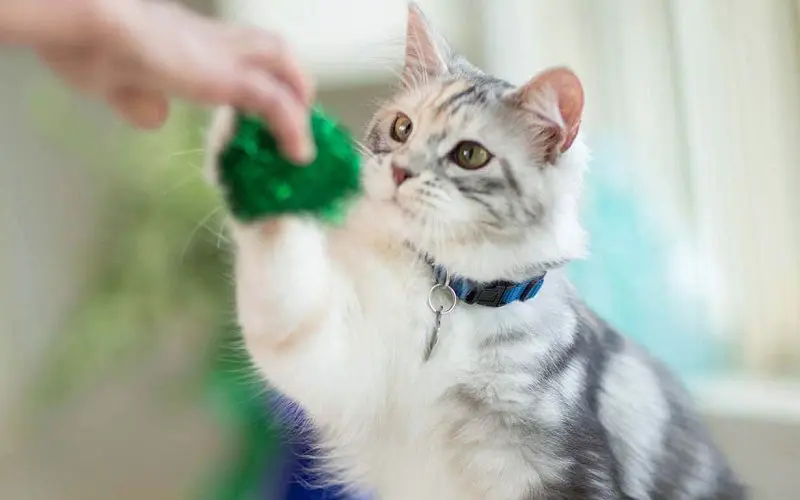
Clicker training is a great tool for shaping behavior. Think of the clicker as a signal for positive reinforcement.
Click it when your cat exhibits the desired behavior and gives you a reward. Consistent use of the clicker is a great cat training tip.
It will help your cat associate the sound with positive reinforcement, speeding up learning.
7. Curtailing Countertop Capers
Cats are notorious for exploring countertops. But this behavior can be curbed.
To satisfy their craving for heights, organize alternative elevated places. These include cat trees, for example.
Use positive reinforcement to encourage them when they choose these places over countertops. It will gradually wean them away from forbidden surfaces.
8. Socialization Success
Introduce your cat to different people, environments, and experiences from an early age.
The effect of cat training on helping to raise a well-adjusted, social cat. Create positive associations by offering treats or playtime during new encounters.
Gradual familiarization helps to reduce fear and anxiety, producing a confident and friendly feline companion.
Cat Training Tools

Do you want your cat’s training to go smoothly? Then, you need to have certain tools at your disposal.
These items can help provide positive reinforcement. Cat training tools help to eliminate specific behaviors and create a favorable training environment.
Here is a list of potentially necessary training tools:
1. Treats
Treats are the currency of cat training. Choose small, tasty treats that your cat likes.
Use them to encourage good behavior. It will create positive associations with the training sessions.
2. Clicker
A clicker is a simple but effective training tool. Use it to mark the exact moment your cat exhibits the desired behavior.
The distinct sound of the clicker signals to your cat that a treat or reward is coming.
3. Interactive Toys
Engage your cat’s instincts with interactive toys. The benefits of such training are valuable for a positive pastime.
Well, they will nevertheless have a positive impact on the development of your furry friend.
4. Catnip
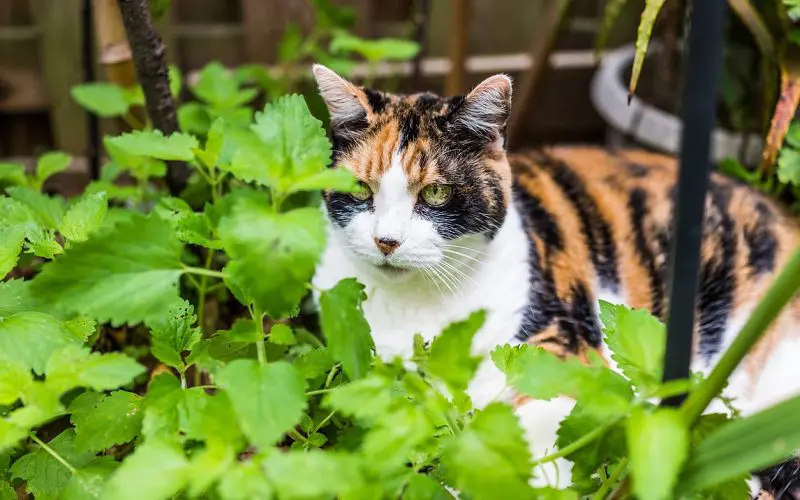
Catnip can be a valuable tool for encouraging positive behavior. The effect of cat training triggers positive associations in the cat.
It easily allows you to entertain the cat while at the same time training it. For example, sprinkle catnip on the scratching post.
The cat will then go to the scratching post with purpose and scratch it.
5. Puzzle Feeders
Make mealtime more fun with puzzle feeders. These toys dispense food as the cat interacts with them.
It stimulates mental activity and slows down fast eating.
6. Litter Box
Choose an appropriate litter box and place it in a quiet and accessible location.
The right litter box promotes successful toilet training. It ensures your cat’s comfort.
7. Nail Clippers/Grinders
Cat training tools, such as claw clippers or grinders, are essential for caring for your cat’s claws.
Regular claw clipping will prevent problems associated with scratching. It will promote healthy paws.
8. Harness and Leash
Get a harness and leash for supervised outdoor walks.
This device will help you control your cat’s movements. It makes it easier to understand how to train a cat.
Cat Training Methods
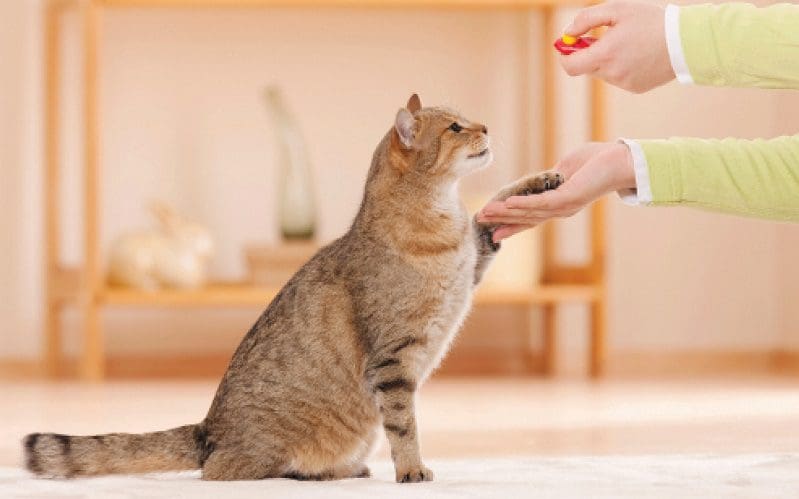
Furry companions are rather naughty creatures. They often like to play and rarely exercise.
However, it is essential to provide training for your cat. The benefit of training is that your cat will be well-mannered.
You need to provide the right training methods to do this. Let’s look at the most popular options to help make your cat a true gentleman.
1. Clicker Training
Clicker training is a popular method of positive reinforcement. It involves using a small device that makes a distinct clicking sound.
Does your cat perform a desired behavior? Then, you click the device and then reward her with a treat.
The click is an accurate marker, helping the cat associate the action with the reward.
2. Litter Training
Toilet training is critical to a cat’s hygiene. Most cats have an instinct to use the toilet.
But if accidents happen, gently guide them to the toilet. Keep it clean to encourage regular use.
3. Basic Commands (Sit, Stay, and Come)
Teaching a cat basic commands improves communication.
Cat training tips for the “sit” command: Hold a treat above the cat’s head. When she looks up, her natural response will be “sit.”
The “stay” command involves gradually increasing the time the cat stays seated.
The “Come to me” command is taught by using a friendly tone and offering a treat when the cat approaches the command.
4. Harness and Leash Training

Of course, cats are not dogs. And if you live in an apartment, you are unlikely to take your cat outside.
But you should train your cat to do these things. Start indoors, letting the cat get used to the harness.
Gradually attach the leash and let it explore a controlled environment. Be sure to give a treat for positive associations.
5. Scratching Post-Training
Cats love to scratch. Getting them used to using a scratching post helps protect your furniture.
Place the post near their favorite scratching spot, and encourage them with treats or praise when they use it.
Consistency is key to the effects of cat training.
6. Name Recognition
Teach your cat to respond to name-calling by consistently using it in a positive context.
When saying her name, encourage her with treats or affection.
Over time, the cat will associate its name with positive emotions and respond to your cat’s call.
7. Interactive Play
To bond with your cat and develop its hunting instincts, play interactive games with it.
Use toys that mimic prey, encouraging them to pounce and chase.
Change toys to keep playtime interesting and active.
8. Positive Reinforcement for Handling
Get your cat used to being picked up for grooming or vet visits.
Gradually introduce touch by offering treats and praise.
These cat training tips will help create a positive association with handling and reducing stress.
9. Training with Catnip
Catnip can be a motivator for training. Use it on scratching posts or in puzzle toys to create positive associations.
The scent of catnip can enhance the effect of training. It can make it more enjoyable for your cat.
Training Your Cat Should Never Involve Hitting
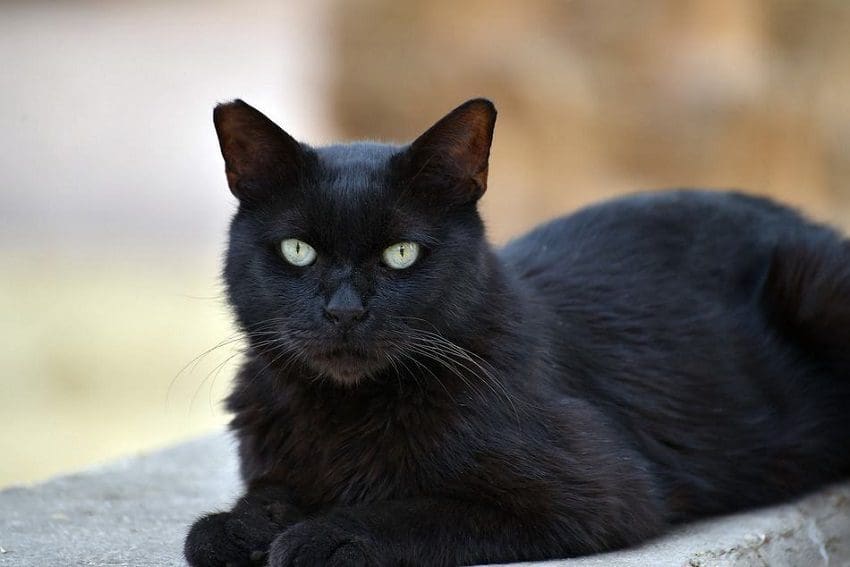
As with all animals, physical correction is never an option. Some people still spank their kids—we won’t get any deeper into that can of worms—as a form of punishment.
Many people also view their pets as children. So human logic would dictate that spanking our pets would be an option for training.
It’s not. Unlike humans, cats and dogs have no concept of that sort of punishment. That’s why negative reinforcement doesn’t work.
Dogs and cats only learn through repetition and reward. They do not understand something like spanking or hitting.
Whatever your thoughts on corporal punishment for kids and animals, it’s just cruel. They don’t get it.
Consequences of Hitting When Training Your Cat

Hitting any pet, but especially cats, is never a good idea.
It fosters fear, aggression, and a generally stressful existence for your pet. If a cat is hit, chances are that home life will go downhill quickly.
1. Fear
Fear is a very real result of hitting any animal.
Depending on your cat’s personality, hitting her could cause her to become one of those cats that only comes out from under the bed when no one is around or zips away whenever she sees you.
Hitting the cat teaches her that her owner is a source of aggression and can cause a permanent fear response.
2. Aggression
Much more so than dogs, cats will not put up with any sort of shenanigans.
Training your cat with physical correction could result in a response that is the total opposite of fear: aggression.
If you have a very confident and stubborn cat or a cat that is already of the “don’t mess with me” personality type, hitting the cat could cause her to turn the tables.
A cat that has had it with being smacked could claw or bite.
3. Acting Out
Outside of fear or aggression, using physical force when training your cat could also result in other forms of acting out.
The cat might start to urinate and defecate outside of the litter box. Some cats also respond to stress by overgrooming, which can lead to hair loss and skin issues.
In-Summary
Whatever your thoughts on spanking as a punishment for children, at least they understand why it’s happening. Dogs and cats don’t.
Cats are especially apt to develop behavioral issues if they are smacked or spanked as a form of correction. Remember, training should never involve punishment.
Animals are trained through repetition and praise. Anything else is just a human venting their frustration. So remember the golden rule when training your cat: never use physical correction.
FAQs
What Age is Best to Train a Cat?
The best age to start training a cat is between 4 and 6 months old. This is when they are most receptive to learning new behaviors, as their brains are still developing and they have not yet developed any bad habits.
Are Cats Easy to Train?
Cats can be trained, but it is not as easy as training a dog. Cats are independent creatures and have their own personalities, which makes them more difficult to train than dogs. Training cats requires patience, consistency, positive reinforcement, and rewards.
Wrap-Up
How to train a cat is a journey filled with patience and positives. By using different methods, you will be able to create a strong bond.
It will allow you to raise an obedient, furry companion. Enjoy the process and celebrate the small victories. Cherish the unique bond you share with your feline friend.
Do you have any tips for training your cat? Share them below!


